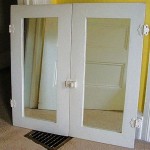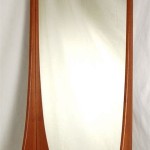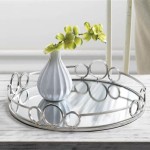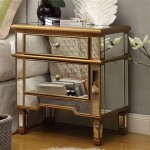Does a Mirror Create More Light?
Mirrors are ubiquitous objects, often taken for granted despite their intriguing optical properties. One common misconception surrounding mirrors is the idea that they amplify or create light. This notion, however, contradicts the fundamental principles of physics governing light and reflection.
Light, a form of electromagnetic radiation, travels in straight lines until it interacts with matter. This interaction can take several forms, including absorption, transmission, and reflection. When light strikes a surface, some portion of it may be absorbed, converting the light energy into heat. Certain materials allow light to pass through them, a phenomenon known as transmission. Transparent materials like glass exhibit high transmission, while opaque materials absorb or reflect most incident light.
Reflection occurs when light encounters a surface and bounces back. The nature of this reflection depends on the surface's characteristics. Rough surfaces scatter light in various directions, resulting in diffuse reflection. This is why objects with rough surfaces appear matte. Smooth, polished surfaces like mirrors, on the other hand, exhibit specular reflection, where the angle of incidence (the angle at which light strikes the surface) equals the angle of reflection (the angle at which light bounces off).
A mirror's reflective surface is typically a thin layer of metallic coating, often silver or aluminum, applied to a sheet of glass. The smooth metallic layer ensures a high degree of specular reflection. When light strikes a mirror, the majority of it is reflected, preserving the spatial relationships of the light rays. This is why we see a clear, reversed image in a mirror.
The key point to understand is that a mirror does not create new light. It simply redirects the incident light, changing its direction. The amount of light reflected by a mirror, measured as reflectance, is always less than 100% due to some absorption and scattering. Even the most highly polished mirrors absorb a small percentage of the incident light. Consequently, the total amount of light in a room does not increase when a mirror is introduced.
The perceived increase in brightness sometimes observed when using a mirror is due to the strategic redirection of light. A mirror can effectively illuminate a dimly lit area by reflecting light from a brighter source. For instance, placing a mirror opposite a window can bring more natural light into a room. However, this is simply a redistribution of the existing light, not the creation of new light energy.
The concept of light amplification is associated with processes like stimulated emission, which is the principle behind lasers. Lasers generate coherent, monochromatic light through a complex process involving the excitation of atoms and the subsequent emission of photons. Mirrors play a role in laser construction by creating an optical cavity that amplifies the light through multiple reflections. However, the mirror itself does not amplify the light; it merely provides a pathway for the amplified light to travel and build in intensity within the laser medium.
Furthermore, the concept of brightness perception plays a role in the perceived effect of mirrors on light. The human eye perceives brightness based on the amount of light entering the eye. A strategically placed mirror can redirect light towards the observer, increasing the amount of light entering their eye and therefore making the area appear brighter. This is a subjective experience related to the observer's position and the direction of light reflection.
The law of conservation of energy dictates that energy cannot be created or destroyed, only transformed. This principle applies to light as a form of energy. A mirror cannot create new light energy; it can only reflect the existing light. While mirrors can effectively manipulate and redirect light, leading to a perceived increase in brightness in certain areas, the total amount of light remains unchanged.
The ability of mirrors to manipulate light has numerous practical applications, from everyday objects like rearview mirrors in vehicles to sophisticated scientific instruments like telescopes. Understanding the true nature of reflection and the role of mirrors in light manipulation is crucial for appreciating the utility and limitations of these ubiquitous objects.

Reflection Of Light Science Learning Hub

Quick N Dirty Heliostat Get Some Sun Into Your Home 4 Steps Instructables

Reflected Glories Mirrors Can Add Light Or Create A Big Statement Daily Mail
How Do Reflections From Convex Mirrors Make Objects Appear Smaller Quora

An Elegant Way Of Living Room Décor With More Reflection Light And Colors
Bringing Reflection And Style A Mirror Guide For Perfecting Your Interior Design Paolo Moschino
Using Mirrors To Create More Light And Fill Spaces The House Of Smiths

Make Room For More Natural Light W A Bright Beautiful Mirror Designed
4 Ways To Naturally Light Up Your Room Using Mirrors Lowcountry Lighting

Ways To Use Mirrors For More Style And Light








